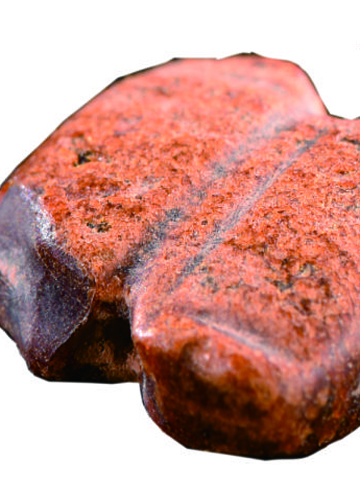Abstract
Amber, highly prized in ancient times, has a wide range of applications. Archaeological evidence confirms that amber played a significant role in long-distance material exchange and trade during ancient times. Baltic amber, in particular, was extensively traded in the Near East region during the Bronze age (e.g., Todd, 1985). The emergence of the Silk Road trade additionally facilitated the spread of amber and its products in the Far East. Extensive archaeological excavations conducted across the Eurasian steppe (Treister, 2020), as well as in China and the Korean Peninsula, have yielded numerous amber artifacts originating from the Baltic Sea (e.g., Park et al., 2016; Xiao et al., 2020; Liu et al., 2022). The northern region of Myanmar served as a significant source of amber material in Asia during ancient times, and amber from this area and its products have also been discovered in the Han Dynasty (206 BCE–220 AD) tombs in China (Chen et al., 2019; Zhao et al., 2023; Liu et al., 2023). It is generally accepted that the ancient amber artifacts in China were primarily made from amber obtained from both the Baltic region and Myanmar (e.g., Xu, 2008). However, the scarcity of amber in Iron Age sites across South and Southeast Asia impedes tour comprehensive understanding about its usage and trade among this specific area.
References
Angelini, I. & Bellintani, P. (2005) Archaeological ambers from northern Italy: An FTIR-DRIFT study of provenance by comparison with the geological amber database. Archaeometry, 47 (2), 441–454. https://doi.org/10.1111/j.1475-4754.2005.00212.x
Bai, Y., Zheng, X.H. & Yin, Z.W. (2020) Characterization of Burmese amber with three-dimensional fluorescence. Spectroscopy and Spectral Analysis, 40 (5), 1473–1477. [In Chinese with English abstract]
Bellina, B. (2014) Maritime Silk Roads’ ornament industries: socio-political practices and cultural transfers in the South China Sea. Cambridge Archaeological Journal, 24 (3), 345–377. https://doi.org/10.1017/S0959774314000547
Chen, D., Zeng, Q.S., Yuan, Y., Cui, B.X. & Luo, W.G. (2019) Baltic amber or Burmese amber: FTIR studies on amber artifacts of Eastern Han Dynasty unearthed from Nanyang. Spectrochimica Acta Part A: Molecular and Biomolecular Spectroscopy, 117270–117275. https://doi.org/10.1016/j.saa.2019.117270
Guangzhou Municipal Institute of Cultural Heritage and Archaeology. (2019) Amber beads. In: Guangzhou Municipal Institute of Cultural Heritage and Archaeology (Ed.), Study on the beads and pendants of Han Dynasties unearthed from Guangzhou. Science Press, Beijing, pp. 156–271. [In Chinese]
Guiliano, M., Asia, L., Onoratini, G. & Gilbert, M. (2007) Applications of diamond crystal ATR FTIR spectroscopy to the characterization of ambers. Spectrochimica Acta Part A: Molecular and Biomolecular Spectroscopy, 67 (5), 1407–1411. https://doi.org/10.1016/j.saa.2006.10.033
Liu, Q., Yuan, Y.M., Zhang, Y.H., Qing, X., Yu, Y.J., Wang, H. & Xu, N.N. (2022) Fourier transform infrared spectroscopy (FTIR) characteristics of ancient amber artifacts of the Han Dynasty from Hunan, China. Palaeoentomology, 5 (4), 345–361. https://doi.org/10.11646/palaeoentomology.5.4.8
Liu, Q., Zhang, Y.H., Li, X.P., Qing, X. & Li, Q.H. (2023) Some amber artifacts excavated from tombs of the Han Dynasty in Hunan Province. Journal of Gems & Gemmology, 25 (4), 146–157. [In Chinese with English abstract] https://doi.org/10.15964/j.cnki.027jgg.2023.04.013
Manasterski, D., Wagner-Wysiecka, E., Kwiatkowska, K. & Cetwińska, A. (2022) Provenance studies on Late Neolithic amber ornaments from North-East Poland. Journal of Archaeological Science: Reports, 44, 103540. https://doi.org/10.1016/j.jasrep.2022.103540
Nang, L.N., Hieu, P.T., Phat, L.V., Tien, P.M., Nguyen, T.M. & Hang, H.T. (2022) Characteristics of newly discovered amber from Phu Quoc, Vietnam. Gems & Gemology, 58 (2), 184–194. https://doi.org/10.5741/GEMS.58.2.184
Park, J.S., Yun, E.Y., Kang, H.T., Ahn, J.Y. & Kim, G.H. (2016) IR and py/GC/MS examination of amber relics excavated from 6th century royal tomb in Korean Peninsula. Spectrochimica Acta Part A: Molecular and Biomolecular Spectroscopy, 165, 114–119. https://doi.org/10.1016/j.saa.2016.04.015
Philippe, M., Cuny, G., Suteethorn, V., Teerarungsigul, N., Barale, G., Thévenard, F., Le Loeuff, J., Buffetaut, E., Gaona, T., Košir, A. & Tong, H.Y. (2005) A Jurassic amber deposit in Southern Thailand. Historical Biology, 17, 1–6. https://doi.org/10.1080/08912960500284729
Todd, J.M. (1985) Baltic amber in the ancient Near East: A preliminary investigation. Journal of Baltic Studies, 16 (3), 292–301. https://doi.org/10.1080/01629778500000191
Treister, M. (2020) Beads and decoration elements made of amber in items of jewelry from the burials of the nomads of Asian Sarmatia in the context of trade in exotic materials in Eurasia. Proceedings in Archaeology and History of Ancient and Medieval Black Sea Region, 12, 148–223. [In Russian with English abstract]
Xiao, Q.Q., Yi, L., Rao, H.Y. & Yang, Y.M. (2020) FTIR analysis of amber from a Tang Dynasty tomb in Chengdu. Sciences of Conservation and Archaeology, 31 (1), 84–89. [In Chinese with English abstract]
Xiong, Z.M. (2014) The Hepu Han tombs and the maritime Silk Road of the Han Dynasty. Antiquity, 88 (342), 1229–1243. https://doi.org/10.1017/S0003598X0011542X
Xu, X.D. (2008) Amber and the origins of ancient Chinese amber. Journal of Gugong Studies, 5 (1), 439–461. [In Chinese]
Zhao, H.T. (2006) Panyu: The earliest set sail port of the Maritime Silk Route of South China—Some views on a review on researches in earliest departure harbor of Silk Road on sea in ancient China. Scientia Geographica Sinica, 26 (1), 118–127. [In Chinese with English abstract]
Zhao, T., Peng, H.H., Yang, M.X., Lu, R., Wang, Y.M. & Li, Y. (2023) Effects of weathering on FTIR spectra and origin traceability of archaeological amber: The case of the Han Tomb of Haihun Marquis, China. Journal of Archaeological Science, 153, 105753. https://doi.org/10.1016/j.jas.2023.105753


